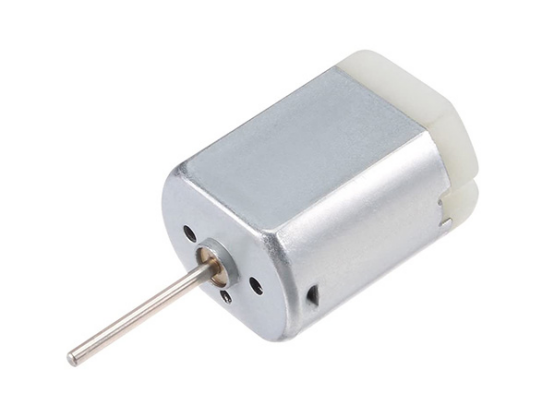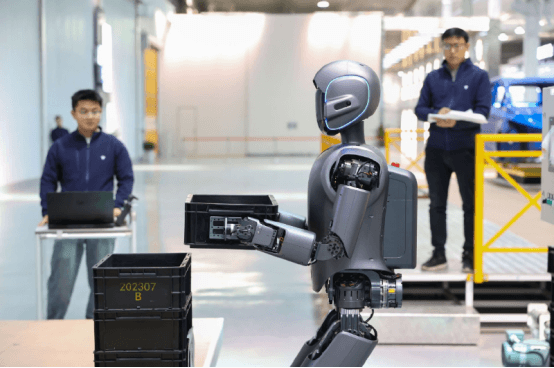
News Center
Comprehensive Guide to Brushless DC Motor
Published on.
2021-07-26 17:57
Source
BLDC motor is called electronic commutation motor (ECM or EC motor) or synchronous DC motor, which is the asynchronous motor that uses direct current (DC) power. The brushless DC motor uses a DC power input, and uses an inverter to become a three-phase AC power supply, with position feedback and permanent magnet synchronous motor. There are many types of motor, and brushless DC motor is the most ideal speed-regulating motor.
It includes the advantages of DC motors and AC motor, not only has good adjustment performance of DC motor but also has the advantages of simple structure, no commutation sparks, reliable operation and easy maintenance. Therefore, it is widely used by the market, such as automobile, home appliances, industrial equipment.

Brushless DC motor development history
Brushless DC motors have more complex structure than brushed motors. The brushless DC motor is composed of the motor body and the driver. It is different from the brushed DC motor. The brushless DC motor does not use a mechanical brush device, but uses a square wave self-control permanent magnet synchronous motor, and replaces carbon with a Hall sensor. The brush commutator uses neodymium iron boron as the permanent magnet material of the rotor.
The 1740s: The invention of the motor begins
Through the work of the Scottish Benedictine monk and scientist Andrew Gordon, early models of electric motors first appeared in the 1740s. Other scientists, such as Michael Faraday and Joseph Henry, continued to develop early motors, experimenting with electromagnetic fields and discovering how to convert electrical energy into mechanical energy.
1832: Invention of the first commutator DC motor
In 1832, British physicist William Sturgeon invented the first DC motor that could provide enough power to drive machinery, but its application was severely restricted due to its low power output.
1834: The first real motor was built
Thomas Davenport of Vermont, USA, invented the first official battery-powered motor in 1834, thus making history. This is the first electric motor with enough power to perform tasks, and his invention is used to power small printing presses. In 1837, Thomas Davenport and his wife Emily Davenport obtained the first DC motor patent. But their motor design still faces the same power and efficiency problems as William Sturgeon's design. Unfortunately, Thomas went bankrupt due to the high battery power costs involved, and the machine wasn't commercially available.
1886: Invention of the practical DC motor
In 1886, the first practical DC motor that could run at a constant speed under variable weight entered the market. Frank Julian Sprague is its inventor, this motor has accelerated its widespread use in industry.

"Practical" motor by Frank Julian Sprague
The practical motor adopts brushless form, an AC squirrel cage asynchronous motor, which eliminates sparks and voltage loss at both ends of the winding and can deliver power at a constant speed. Asynchronous motors have many insurmountable defects so that the development of motor technology is slow.
Because of its simple mechanism, the DC brush motor is easy to produce and process, maintain and control. It was widely used at the beginning.
1887: Acquired a patent for AC induction motor
In 1887, Nikola Tesla invented the AC induction motor and successfully applied for a patent a year later. It is not suitable for road vehicles and was modified by Westinghouse engineers. In 1892, the first practical induction motor was designed, followed by a rotating bar-winding rotor, making the motor suitable for automotive applications.
1891: Development of three-phase motors
In 1891, General Electric began to develop three-phase induction motors. In order to utilize the wound rotor design, GE and Westinghouse signed a cross-licensing agreement in 1896.
1955: The era of brushless DC motors begins
In 1955, American d. Harrison and others applied for the first patent for replacing the mechanical brushes of a brushed DC motor with a transistor commutation circuit, marking the birth of a modern brushless DC motor. At that time, there was no motor rotor position detection device, and the motor couldn’t be started.
1962: Invention of the first BLDC motor
Benefiting from the advancement of solid-state technology in the early 1960s, in 1962, TG Wilson and PH Trickey invented the first brushless dc motor, which they called the "DC motor with solid-state commutation". The brushless motor doesn't require a physical commutator, so it has become the most popular choice for computer disk drives, robots, and airplanes. They used the Hall element to detect the rotor position and control the commutation of the winding current to make the brushless DC motor practical, but limited by the capacity of the transistor, the motor power is relatively small.
1970s to present: the rapid development of brushless DC motor applications
Since the 1970s, with the emergence of new power semiconductor devices such as GTR, MOSFET, IGBT, and IPM, the rapid development of computer control technology, and high-performance rare earth permanent magnet materials, brushless DC motors have been rapidly developed and their capacity has continued to increase.
With the introduction of the mac classic brushless DC motor and its driver in 1978, as well as the development of square wave brushless motors and sine wave brushless DC motors in the 1980s, brushless motors have truly begun to enter the practical stage.

Basic knowledge of BLDC motor
Brushless DC motor structure
The brushless DC motor is mainly composed of a rotor made of permanent magnet materials, stator with coil windings and position sensor.
Stator
The stator structure of a BLDC motor is similar to that of an induction motor. It’s composed of stacked steel laminations with axial grooves for winding. The windings in BLDC are slightly different from the windings of traditional induction motors.
BLDC motor stator
Generally, many BLDC motors consist of three stator windings, which are connected in a star or "Y" shape. In addition, based on the coil interconnection, the stator winding is further divided into trapezoidal and sinusoidal motor.
Rotor
The rotor part of the BLDC motor is composed of permanent magnets.
Depending on the application, the number of poles can vary from 2 to 8, with the North Pole (N) and South Pole (S) alternately placed. The figure below shows three different arrangements of magnetic poles.
A. The magnet is placed on the outer circumference of the rotor.
B. It's called an electromagnetic embedded rotor, in which rectangular permanent magnets are embedded in the core of the rotor.
C. Insert the magnet into the iron core of the rotor.

BLDC motor rotor
Since there are no brushes in the BLDC motor, the commutation is electronically controlled. In order to make the motor rotate, the stator windings must be energized sequentially, and the position of the rotor must be known to accurately energize a specific set of stator windings.
The position sensor of the Hall sensor is usually used to detect the position of the rotor and convert it into an electrical signal. Most BLDC motors use three Hall sensors, which are embedded in the stator to detect the position of the rotor.
The output of the Hall sensor will be high or low, depending on whether the north pole of the rotor is the south pole or near the north pole. By combining the results of the three sensors, the exact order of energization can be determined.
The working principle of brushless DC motor.
Brushless DC motors don’t use brushes. The brushless DC motor doesn't use a commutator to adjust the current inside the coil but uses an electronic commutator to transfer current, which generates an alternating current signal, which leads to the motor drive.
The working principle of a brushless DC motor is similar to that of a brushed DC motor. Lorentz's force law states that as long as a current-carrying conductor is placed in a magnetic field, it will be subjected to a force. Due to the reaction force, the magnet will withstand equal and opposite forces. When the current passes through the coil, a magnetic field is generated. The magnetic field is driven by the magnetic poles of the stator. The same polarity repels each other and the different polarities attract each other. If the direction of the current in the coil is continuously changed, the magnetic pole of the magnetic field induced by the rotor The change will also continue, and the rotor will continue to rotate under the action of the magnetic field.
In the BLDC motor, the current-carrying conductor stator is fixed, while the permanent magnet rotor is moving.
BLDC motor operation diagram
When the stator coil receives power, it becomes an electromagnet and begins to generate a uniform magnetic field in the air gap. Although the power source is direct current, the switch still generates an alternating voltage waveform with a trapezoidal shape. Due to the interaction force between the electromagnetic stator and the permanent magnet rotor, the rotor continues to rotate. By switching the windings to high and low signals, the corresponding windings are excited to the north and south poles. A permanent magnet rotor with south and north poles aligns with the stator poles, causing the motor to rotate.
There are three configurations of brushless DC motors: single-phase, two-phase and three-phase. Among them, three-phase BLDC is the most common one.

Driving method of brushless DC motor
The driving mode of brushless dc machine motor can be divided into a variety of driving modes according to different categories, and they have their own characteristics.
According to the driving waveform: square wave driving, this driving method is convenient to realize and easy to realize the motor position sensorless control.
Sinusoidal drive: This drive method can improve the running effect of the motor and make the output torque uniform, but the realization process is relatively complicated. At the same time, this method has two methods, SPWM and SVPWM, and the effect of SVPWM is better than SPWM.
Advantages and limitations of brushless DC motor
Advantage:
High output power
Small size and light weight
Good heat dissipation and high efficiency
Wide operating speed range
Low noise
High reliability and low maintenance requirements
High dynamic response
Less electromagnetic interference
Limitation:
The electronic controller needed to control the motor is expensive
Need complicated drive circuit
Need additional position sensor
Application of Brushless DC Motor
Brushless DC motors are widely used in various application requirements, such as various loads, constant loads and positioning applications in industrial control, automotive, aviation, automation systems, medical and health equipment and other fields.

Industrial control field
In recent years, due to the large-scale research and development of brushless DC motors and the gradual maturity of technology, the distribution range of their drive systems in industrial production has also expanded, and they have gradually become the mainstream of industrial motor development. Research and attempts to reduce production costs and improve operating efficiency have achieved significant benefits. Many manufacturers also provide different types of motors to meet the needs of different drive systems. At present, brushless DC motors have been involved in industrial production such as textiles, metallurgy, printing, automated production lines, and CNC machine tools.
Automotive field
In addition to the key engine, motors are used in wipers, electric doors, car air conditioners, and electric windows.
With the development of the automobile industry in the direction of energy conservation and environmental protection, the motors used must also meet the standards of high efficiency and low energy consumption. The brushless DC motor's low noise, long lifespan, no spark interference, convenient centralized control and other advantages are fully in line with it. As its speed regulation technology becomes more mature, the cost performance will become higher and higher. It is used in all aspects of automobile motor drive. The application will be more extensive.
Medical equipment field
In abroad, the use of brushless DC motors has become more common, which can be used to drive small blood pumps in artificial hearts. In China, high-speed centrifuges, thermal imaging cameras, and infrared laser modulators of thermometers for high-speed surgical appliances all use brushless DC motors.
Household appliances field
"Inverter frequency" technology has become very common. As a symbol of China's home appliances, it has gradually occupied most of the consumer market. "DC frequency conversion" has been favored by manufacturers, and there has been a trend of gradually replacing "AC frequency conversion". This transformation is essentially the transition from induction motors to brushless DC motors and their controllers for the motors used in home appliances to meet the requirements of energy saving, environmental protection, low noise intelligence, and high comfort. The development direction of the brushless DC motor is the same as that of power electronics, sensors, control theory and other technologies. It is the product of a combination of multiple technologies. Its development depends on the innovation and progress of each technology related to it.
Office computer peripherals, electronic digital consumer products
For example, the common printers, fax machines, copiers, hard disk drives, floppy disk drives, movie cameras, etc. in daily life, all use brushless DC motors in the drive control of their main shafts and auxiliary motions.
The difference between brushless DC motor and brushed DC motor
The difference in working principle:
The brush motor adopts mechanical commutation, the magnetic pole does not move, and the coil rotates. The main structure of the brushed motor is the stator, the rotor and the brushes. The rotating torque is obtained through the rotating magnetic field, thereby outputting kinetic energy. The brush and the commutator are in constant contact and friction and play a role in conduction and commutation during rotation.
The brushless motor adopts electronic commutation, the coil doesn't move, and the magnetic pole rotates. The brushless DC motor is composed of the motor body and the driver and is a typical mechatronic product. The brushless motor senses the position of the magnetic pole of the permanent magnet through the Hall element. Based on this perception, the electronic circuit is used to switch the direction of the current in the coil in a timely manner to ensure that the magnetic force in the correct direction is generated to drive the motor.
The difference in performance:
The brushed DC motor technology is more mature, the starting response speed is faster, the starting torque is larger, the operation is smoother, and the control accuracy is higher. The brushed DC motor has a simple mechanism and easy production and processing. It was widely used in the 19th century and its technology development was relatively mature. Brushless DC motors have been slowly put into commercial operation in the past ten years, and the technology is relatively immature. The brush DC motor has a fast starting response speed, large starting torque and stable speed change, while the brushless motor has a large starting resistance and a relatively small starting torque. The DC brushed motor has higher output power and higher control accuracy. The control accuracy can reach 0.01 mm, which can make the moving parts stop almost wherever you want. All precision machine tools adopt DC motors to control precision.

Brushless DC motors have lower interference, lower noise, longer lifespan, and lower maintenance costs. Compared with the brushed DC motor, the brushless DC motor removes the brushes. The change is that there is no electric spark generated when the brushed motor is running, which greatly reduces the interference of the electric spark on the remote control radio equipment. The brushless motor is a maintenance-free motor, only need to do some dust removal maintenance.
The world's top 10 mainstream manufacturers of BLDC motor
Currently, in the BLDC industry, the top-ranking companies include ABB, AMETEK, Nidec, Minebea Mitsumi, Johnson Electric, Allied Motion, Baldor, ACA, Schneider Electric, Regal Beloit Corporation, etc.
Excellent BLDC motor production line company
Excellent motor manufacturing equipment company includes Nittoku, HONEST Automation, ATOP, Odawara and Marsilli. The above companies have excellent R&D capabilities, and the company has many successful cases in winding machines and motor production lines.
Related News






